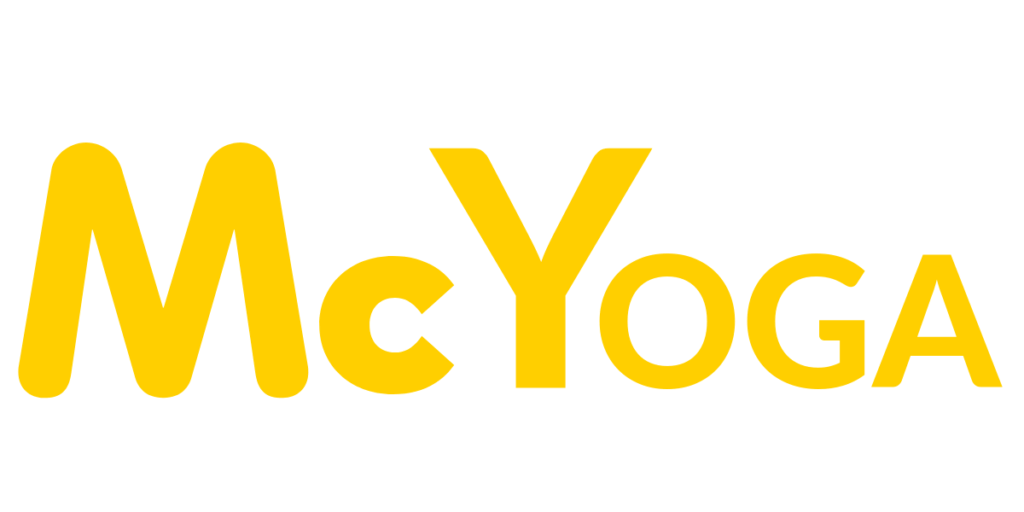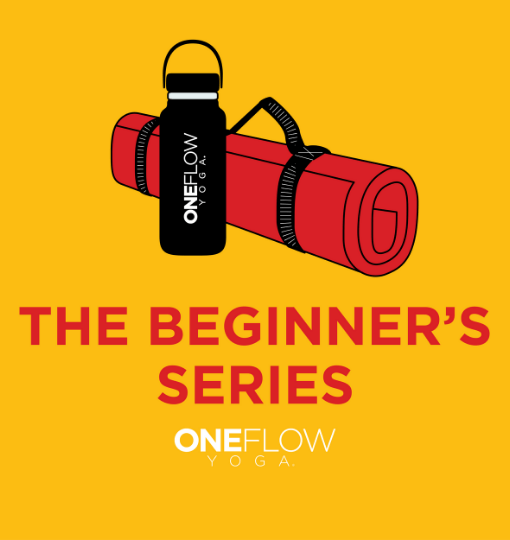You’ve decided you want to become a yoga teacher, or you’re investigating the possibility and want to know what’s involved. You’ve come to the right place.
Quick note, this piece is not about whether it’s a good idea or not for you to take a teacher training program. For more on the reasons people specifically explore this path head over to here.
Reading this will give you a deeper understanding of the process to become a yoga teacher. We’ll also delve into yoga teacher training, the yoga alliance, and the idea of yoga teacher certification. You can read why to trust this advice here.
Teaching Yoga is a Creative Art
To make this simple, it helps to know that yoga is one of the creative arts and as such shares their language, challenges, and opportunities.
Yoga as a creative art is a big concept, and one not commonly known, so we’ll take a moment with it. It’s critical, though, and goes back to the notion of what do we think we’re doing when we teach yoga.
Some of the creative arts are cooking, painting, and singing. Hairstylists, musicians, and comedians all fit in here. As do bartenders, and yes, yoga teachers.
Now stay with us here because when you get to the highest levels of any profession, it becomes an art.
Great surgeons’ work relies on technical skill and expertise, but more than that, it’s beautiful. Top attorneys who litigate, build simple, elegant arguments that are easy to follow and sound. Olympic athletes who run, jump, and flip better than anyone else on earth awe us with the grace and artistry of their movements.
We share a language means if you listen to how a writer or musician speaks about their work, they use the same word—craft. Craft is how it is referred to behind the scenes, away from those who watch, taste, or listen to it.
“I spent 28 years to hone my craft so I could write any kind of music.”
Quincy Jones
In the end, what is most important to comedians is, “Are you funny or not?” To chefs, “Can you cook or not.” To yoga teachers, “Can you teach or not.” This is what matters to the audience too.
“Male, female, gay, straight, legal, illegal, country of origin—who cares? You can either cook an omelet or you can’t.”
Anthony Boudain
No one wants to watch a musician who can’t play their instrument well or go to a stylist who turns everyone’s hair into a shock of sad strands.

There’s a term for that too, for those who are not good at their craft—hack.
“And no matter how much I want to encourage the man or woman trying for the first time to write seriously, I can’t lie and say there are no bad writers. Sorry, but there are lots of bad writers.”
Stephen King, On Writing
The challenge of being in the creative arts is how do you learn your craft.
And the opportunity is you can change lives, including your own.
Where Do You Learn to Be a Yoga Teacher
Here’s where things go a little off for yoga teachers, though they shouldn’t.
If you want to be a great writer, you start writing. Same if you’re going to be a comedian.
Yes, there are courses and books on how to be a comedian, but one of the best, states:
“If you want to be successful as a comic, get onstage, on any stage, as much as you can.”
Judy Carter Comedian, Author, The Comedy Bible
So are we saying, “If you want to be a yoga teacher, go out and teach yoga.”
No, but we are pointing out that you learn by doing. However, you also need some help, which is why yoga schools, a.k.a. Teacher training programs, came into being.
“Go to the wise and question them.”
Advice from Krishna to Arjuna, Bhagavad Gita 4:34
Train with the best teacher training program you can afford
We’ve heard this story from a few different teachers about how you used to become a yoga teacher.
They say you studied with one teacher for a very long time. One day the teacher has to be absent and asks you to step in. Sometimes they give you a knowing look, called the “shaktipat.” You have now been deemed ready to teach.
That may all be true; however, it’s a terrible idea.
Because you may have twenty years of yoga practice. You may be able to do every posture and even have copyrighted a few of your own before you learned about non-possessiveness. And you may be a kind, moral person who treats others well. But as of that moment, you have zero days of experience teaching.

Jason Crandell, a San Francisco based yoga teacher, tells just such a story. And the first thing he did after getting the nod was to find the best program he could.
Before the rise of TT programs, yoga teachers trained by showing up regularly at classes and then being asked to substitute for the regular instructor; eventually, they started teaching regularly. There were no formal training programs.”
Bernie Clark, Your Body Your Yoga
Understood in the story above is the time it takes to become a yoga teacher. There is the time you need to develop your practice. Time also helps you do the work of yoga–change and transformation. You need time to change, heal, and grow.
A quality yoga teacher training can help you with the second aspect. But there’s an issue in determining the quality of a program.
Your Brain is Working Against You
Finding a good program is tough for several reasons, including that we lack the expertise to tell what’s good. It’s a cognitive bias called the Dunning-Kruger effect. We’re not talking about ego. We are missing the knowledge and information to make an informed choice.
We’ll say it another way. You need a moderate amount of knowledge about teacher training programs to evaluate teacher training programs.
Where do you get that information?
Keep Reading.

Here’s a quick primer on yoga teacher training programs to help grow your knowledge and minimize cognitive biases.
All yoga teacher training programs are different.
There is not a manual that tells you how to teach teachers so everyone must create their own. As they do so, they start with the training they’ve gone through. This can lead to, shall we say, “similarities” to other programs.
Many programs are copies of copies
There is nothing wrong with looking to your past notes and manuals for inspiration, but as a teacher trainer, temper it with your own experience, study, and observation. You should have something to add to the conversation.
Underlying the notion of offering teacher training is the purpose. What is your goal in creating a teacher training program? That depends on your vantage point, are you a yoga studio, yoga teacher, mega-corporation?
Different Entities Train Yoga Teachers
There is a bevy of entities vying for your teacher training dollars. And more enter all the time, including Wanderlust, a yoga/music festival that now has yoga studios, and Lululemon, the retailer, which opened its first yoga studio, in its Chicago store in 2019. Trainings can’t be far behind.
Traditionally, there are three places to go for training, beginning with yoga studios that train the most students overall.
Yoga Studios
Yoga Studios often rely on yoga teacher training programs to pay the bills
Owning a yoga studio is not a get-rich-quick scheme. We did some head calculations and realized we would have earned more working at Starbucks than we did our first year running a yoga studio.
You can get by when you run a yoga studio well, but if not, you’re going to struggle. Teacher training is a way to boost revenue and cover expenses, but you may not be in a position to offer a quality training.
It’s common for a new yoga studio to open and immediately offer a training program because they have overhead to cover. That’s understandable, but launching a new business is stressful for anyone so that might not be the best time to add the pressure of training.
Some studios will job out teacher training to guest teachers and split the proceeds with them while others will go it alone. The latter option risks the copy-of-a-copy conundrum or worse.
What’s worse? If you are brand new to developing teacher trainings, and you don’t use a well thought out model as a template, you might just be throwing random things together. That’s not a great strategy for cooking a tasty meal, let alone teaching the next generation of teachers.
However, and it’s a big, however, there are thriving studios that do not need the income from a training program to survive. They offer teacher trainings because the students in their community want the experience. Yoga teacher training is how you learn the depth of yoga these days. And people want to go deep.
The thriving studio also has a continual need for high-quality yoga teachers because life happens, and people move, get promoted, and go on with their lives. And like chefs, writers, and bartenders, there are a lot of yoga teachers, but not a lot of great teachers. Thus it’s just faster and more reliable for a studio to grow its own.
But developing a high-quality teacher training program that produces high-quality teachers requires a significant commitment on the studio’s behalf. It’s a long game that takes years to realize.
A HUGE upside of studying with an independent, stable studio is that they typically hire from their teacher training pool.
The big plus to training at a local studio—they hire from within
This is also a good reason to train in the town you want to teach in at the studio you want to teach at because they’re more likely to hire you rather than someone who trained elsewhere.
Likewise, the downside of yoga teacher training in Bali, India or Costa Rica, while beautiful, and a nice yogcation, (is that a word), is it won’t help you much getting a job stateside.
It’s also a sweet moment when a new teacher teaches her first class and her peers from teacher training show up in support.
Many studios do hire from outside, so don’t think you have to train where you want to teach. It does help, especially if the studio has an excellent program but remember the first step is to get the best quality education you can afford.
Independent Yoga Teachers
Independent Yoga Teachers Earn Their Income from Training Teachers
There are independent yoga teachers, meaning they do not own a yoga center or work for someone else. They are an independent contractor, and yoga is their business. While they may teach public classes, the economics of yoga demand they teach teacher training because that’s how they can make a sustainable living.
Very often, they travel and may be responsible for trainings in different parts of the world.
Being able to offer yoga teacher training independently relies on the size of your audience or following. If that reminds you of social media, you’re not far off.

Musicians, poets, and comedians have a following. To play bigger stages requires you to have a bigger fan base.
The upside of studying with an independent teacher is you get to choose who you train with. A well-known teacher may also have more insight into being successful as a yoga instructor if they’ve managed to make a go of it.
The downsides are popularity and economics.
You may have a lot of other people in the room if they are popular. And if this is their primary source of income, they are going to want the class to be as full as possible.
More importantly, they don’t have a stake in whether you do well or not as a teacher. Once you learn from them, you go back out into the world to ply your trade.
It’s not that they don’t care about you. Perhaps you return to take their public classes, a higher-level training, or buy their merch. But their economic fortune is not tied directly to your success.
One more thing: Popularity is not mastery. There are countless stories of people traveling to take a class with XYZ yoga instructor because they had 50,000 Instagram followers only to be disappointed.
The other economic consideration is it may cost more to train with a well-known independent teacher. There’s typically travel, lodging, meals to consider, on top of the tuition. Is the quality of education better worth it? You have to decide.
Do your research and check them out, which should be easier if they are popular. Do they have videos? Have they written anything or host a podcast? What is the quality of their material? Does it seem in-depth or superficial? Do they know their stuff?
These questions will help you separate those teachers who are making a real contribution to yoga education from those who are merely financing their next getaway.
When you watch Gordon Ramsey cook online, there’s no doubt he’s got the skills. The question then becomes do you want to hang out with him for 200 hours?
Yoga Studio Chains and Franchises
A subset of yoga studios are the yoga chains and franchises. The former are groups of yoga studios, often backed by private equity or publicly traded, (i.e., they have a lot of money), that got into yoga to make a return on investment. (Yogaworks was traded on the NASDAQ stock market under the ticker symbol “YOGA.” but was delisted)
The franchise model exists in many industries, with the most famous being fast foods’ and the likes of McDonald’s. In yoga, franchises have names like Honor Yoga, Yoga Six, Sunstone Yoga, and Corepower Yoga.

The advantage of owning a yoga franchise is that it allows you to invest in a yoga studio, minimize your risk, and get name recognition. You’ll also receive a formula you can follow to be successful.
For the business doing the franchising, it offers the ability to expand while limiting their debt, risk, and liability.
To invest in a franchise operation you typically pay a franchise fee and then a monthly payment, called a royalty, of a certain percentage. This is in addition to the normal costs of setting up and running a studio.
Businesses become profitable by having a good product, so a yoga chain or franchise will most likely have a decent program.
But the standardized program might also feel generic because it depends on the quality of the teacher delivering it. The same thing happens when a voice actor is brought in to read an audiobook. The results vary. Some are supreme, and others, subpar.
This is the nature of franchises–they are run by individual owners who must follow the company’s rules. Often the owners will hire a manager to run things, but the level of yoga knowledge on behalf of the owners and managers will fluctuate wildly and might be non-existent.
The promise by the company offering the franchise is you can be an industry novice. They’ll teach you everything you need to know and then give you a proven system, including a format to train teachers.
The standard teaching program helps these businesses get as many people through the training as possible. To them, teacher trainings are a line item on their income statements, and they have financial goals to meet, investors to satisfy, and investments to recoup.
There might also be more, “encouragement” for you take teacher training and take it from them—and soon. See the excellent New York Times article: Inside CorePower Yoga Teacher Training.
To be clear, you can get some excellent training at any of the above options, but it can be hit-or-miss. Knowing the purpose and intention behind why an entity is offering yoga teacher training will make you a wiser yoga consumer.
What Yoga Teacher Trainings Cover
Learn the Basics
Every creative art has fundamentals.
To chefs, knife skills are like breathing. You’ve got to do it and do it well.
Painters study color theory, light, and shadow, proportion.
As yoga teachers, we rely on our knowledge, experience, and skills with yoga postures.

An excellent teacher training will cover the basics.
If you’re unsure what a posture is supposed to feel like, it’s difficult to impart that to others. If you don’t know anatomy, you may be cueing in a way that is anatomically impossible or ill-advised.
To simplify the teaching of postures and to scale it to students quickly, many programs rely on a script. This is a sequence, a set of poses, that you memorize.
That’s a good starting point, but to create effective sequences yourself, you need to understand the individual postures and how they work together.
It’s like musical notes compared to musical phrases. You need to know how to take a posture apart into its components and put it back together again.

To the public, it may look like a yoga teacher is calling out postures.
That approach would not be skillful.
A skilled teacher responds to what’s happening in the room and makes adjustments. Does this need more seasoning? Does this need to cook a little longer? Did we burn this and need to start over?
A great teacher training program will introduce you to the different options and help you explore the effects of each. What happens if you speed up a class? Slow it down? How do you raise the energy of a class or calm it? What postures might you emphasize if you want to create a space for reflection?
Yoga Philosophy
Yoga philosophy is another aspect of training and informs why we do what we do.
Many yoga schools teach the Yoga Sutras of Patanjali.
You know you’re in this philosophy by listening to the language. Do teachers use the words “liberation” and “freedom”? Ask, “from what”?
To Patanjali, a yogi in the ascetic model of yoga, liberation, or moksha, meant freedom from the material world. What is the material world? The world. Is that what you’re looking for, freedom from the world? We hope not.
All of the limb talk also comes from Patanjali and his (probably his and not hers) 8-limbed path. But that’s only one facet of yoga philosophy. There’s more. A lot more.
Philosophy is the why behind our actions in a yoga class. To get a sense of what philosophy, if any, a yoga program subscribes to, ask, “What is the big promise of yoga?” “How does doing yoga postures help us do that?” They should be able to tell you, and it should make sense to a rational person.
If they say something to the effect of, “Well, it’s really about being happy,” ask, “How does doing yoga poses lead to happiness?”
You should get a better answer than Elle Woods from Legally Blonde on why fitness instructors can’t kill people.
“Exercise gives you endorphins. Endorphins make you happy. Happy people just don’t shoot their husbands; they just don’t.”
Legally Blonde
There is a mixed-bag of yoga philosophies out there. A good school will be able to talk about several. And be sure the program teaches yoga philosophy instead of something else. It’s a good sign if they use texts such as the Bhagavad Gita, Upanishads, or Hatha Yoga Pradipika.
We’ll pause here just for emphasis. The goal of philosophy is to help us understand ourselves. It shines a light and helps us to move in an informed manner rather than thrashing about in the darkness. Yoga philosophy should to the same.
Types of Yoga
There are many different types of yoga.
That would seem intuitive but isn’t.
Not only that, but there are a lot of ways to teach different styles of yoga, which is why no two yoga studios are alike.
The trouble starts because we tend to think of yoga as one thing instead of an umbrella term like the word “car.”
If someone just bought a car, you might ask, “what kind did you get?” People don’t say that about yoga. They say, “I practice yoga.” They might not even know what kind they practice.
As a discerning yoga consumer, like yourself, you need to know this because it matters, especially if you want to teach.
When you train, you are becoming a yoga teacher in a particular type of yoga.
As you assess different training programs take time to explore different styles of yoga. This will enlarge your perspective and reveal insights that will impact your teaching.
You need to know Power Yoga can be loose and fast, and Iyengar alignment-based yoga can often feel like a workshop.
People who practice Bikram Yoga, often called “Hot Yoga” are doing a set sequence every time and tend to be weaker in their upper bodies. And hatha yoga, which refers to any movement-based yoga practice, is generally done at a slower pace in a cooler room.
The most popular type of yoga is vinyasa yoga, so if you want to be able to teach the most people that would be the style to learn.

However, vinyasa has some challenges, as all styles do, and you need to know them so you can compensate in your studies. It will make you a stronger teacher
Whether you want to teach or not, the advice is the same. Try several different types of yoga classes with different teachers to get a better idea of what’s out there.
The Yoga Alliance
The sheer mention of the Yoga Alliance has people quaking in their Utkatasanas.
Ok, that’s not true, but it is the behemoth when it comes to credentialing certified yoga teachers.
Only that’s not what it does.
From their website, they state:
“Yoga Alliance® is the largest nonprofit association representing the yoga community. Our mission is to promote and support the integrity and diversity of the teaching of yoga.” “Currently, we have over 90,400 Registered Yoga Teachers (RYT®) and more than 6,200 Registered Yoga Schools (RYS®).”
Yoga Alliance Website
Take a minute to think about that. 90,000+ registered yoga teachers. There are only 310 cities in the United States with a population above 100,000. You could have a pretty decent city with the inhabitants all being yoga teachers. Imagine such a place. Would there be a wheatgrass smoothie stand on every corner?
The Yoga Alliance clarifies that about 18% of that total comes from outside the U.S. and includes more than “130 nations and territories.”
Think of the Yoga Alliance as a trade group. Sort of. Every time you see designations on a website or yoga studio window like “registered yoga school” or “registered yoga teacher,” it came from the alliance. They register yoga teachers, as in log them.

Why Yoga Alliance Registration Matters
Every four years there is a Yoga in America Study, done at the behest of Yoga Journal and yes Yoga Alliance. In 2016 the study found this?
“91% of Yoga studio owners believe it is important for their teachers to have Yoga Alliances’ credential to teach at their studio.”
Yoga in America Study 2016
In other words, it’s something yoga studios look for when hiring yoga teachers.
There is the idea in the back of people’s minds that yoga teachers are certified, but that’s not the reality.
Yoga teachers are not certified.

There are no boards certifying yoga teachers. There are no state licensing requirements. There is no national certification course or comprehensive exams to pass.
Yet yoga studios will often advertise their programs as “certified yoga teacher training.”
And perhaps they can do that because the word certify means to “attest as being true” (Merriam-Webster), as in “I do declare, you are a yoga teacher.”
While there are extraordinary definitions of certify, we usually associate the term with authority, validity, and standard. And it’s not unusual to have initials accompany that certification like J.D., M.D., or R.E.S.P.E.C.T.

Yoga is the Wild West
Because there are no official standards or credentials, anyone can call themselves a yoga teacher, and bam, you’re a yoga teacher.
We just saved you $3500. Aren’t you happy you read this?
You can get certified as a yoga teacher over a weekend or spend three years.
We mentioned this to a person interested in teacher training, and she says, “That worries me.”
It worries us too and underscores the importance of scrutinizing prospective programs.
Back to our cooking example…can you cook? Can you teach?
“Every time we get a new cook in the kitchen, we always ask them to make a scrambled egg. And if they can make the perfect scrambled egg, you know they know how to cook properly.”
Gordon Ramsey
Randomly declaring yourself a yoga teacher might be morally dubious, but it’s not illegal. Which leads us to the next question, “Shouldn’t there be standards?”
The Yoga Alliance says yes, and it’s proffered some which are updated, for the first time in twenty years in 2020.
You can see the new 200-hour R.Y.S. standards here.
Briefly, there are four main categories
- Techniques, Training, Practice
- Anatomy & Physiology
- Yoga Humanities
- Professional Essentials
And thirteen subcategories
- Asana
- Pranayama & Subtle Body
- Meditation
- Anatomy
- Physiology
- Biomechanics
- History
- Philosophy
- Ethics
- Teaching Methodology
- Professional Development
- Practicum (Practice Teaching)
- Elective Hours
We appreciate the idea of having some minimal standards because the alternatives are no standards or perhaps government oversight.
That would come with its own set of issues such as complying with various state regulations to teach in different states.
There is swirling controversy within the yoga community about whether the Yoga Alliance helps or hinders the community. We appreciate the comment below from thrioow on Reddit on why they value it.
“YA requires recorded teaching hours into the thousands. I’ve been teaching multiple classes a week for 12 years and just reached their standard for eRYT-500. I suspect that people who don’t appreciate YA are new to teaching or new to training who don’t understand why it has value.”
You’ll also find just as many social media group chats and podcasts railing against it. You’d think yoga teachers are in the streets with pitchforks.
The general complaint is the Yoga Alliance doesn’t do enough. “There’s not enough outreach.” “The standards are not enough.”
Or else it’s that the alliance is in it for themselves…like they are sailing the Yoga Alliance yacht around they bought with member dues.

Either way, the Yoga Alliance standards are something. You can either iterate and improve, (e.g., iPhone 1st generation), do nothing, or start over.
There has to be balance, another use of the term yoga. Yoga: the process with which harmony or balance is brought about.
The appeals to abandon or embrace the Yoga Alliance aside, the bigger question keeps going back to, “Can you teach?”
From a yoga studio perspective, anyone worth its salt is going to audition teachers before making an offer of employment.
Though, if an audition doesn’t work out at one studio, there is usually another studio that will hire them. As for hairstylists or bartenders, there are various degrees of quality in establishments. There is the Supercuts of yoga.
Action Plan to Get Info on a Yoga Teacher Training
1. Read the website of the yoga training you want to take, at a minimum. Note is it:
- Clear?
- Helpful?
- Detailed and informative?
2. Attend an info session if offered. Otherwise, take a class with the lead teacher and stay to speak with them afterward. They may be busy or have another class to get to but express your interest and see if you can schedule some time to learn more about their program.
3. Speak to recent teacher training graduates of the program you are interested in, and if possible, take a class they teach. You can ask teacher training graduates of the program, though there is another cognitive bias called the choice-supportive bias or post-purchase rationalization.
Yoga teacher training graduates have spent a lot of time and money in completing the program they choose. It would cause them discomfort to think they wasted their money so this bias gets rid of it. It does this by allowing them to believe that whatever program they selected was the best.
Rather than ask graduates “what they think of their teacher training,” ask, “How has your life changed as a result of taking the program.” Or you could say, “What’s different in your life now compared to before you took teacher training.”
The answer should be something real like “got my dream job,” or was finally able to forgive the person who hurt me. If yoga is a life-changing practice, you should see life changes.
Schedule
We haven’t talked a lot about schedules because if the program is outstanding, it is worth rearranging your calendar to attend.
People often start with the schedule, and it is a consideration, but it shouldn’t be the primary one. Most programs are going to be on nights and weekends because they know that’s when you can attend.
After you choose a program.
Apply. There is typically an application, though there may not be. A great program will want to vet you to see how if you’re a great fit.
Make space in your life for training. Taking teacher training is like having a child. There’s never going to be a perfect time to do it, but if it’s important to you, you go for it.
Going through yoga teacher training is the beginning of your journey to becoming a yoga teacher. Becoming good is entirely different. It’s the same difference between going to a premier performing arts school, like Julliard, and making a career as a musician.
“Just because you play really well, that’s not enough. You need vision, you need persistence, you need passion for what you do, and you need to provide something unique.”
Ittai Shapira Julliard Class of 1994




